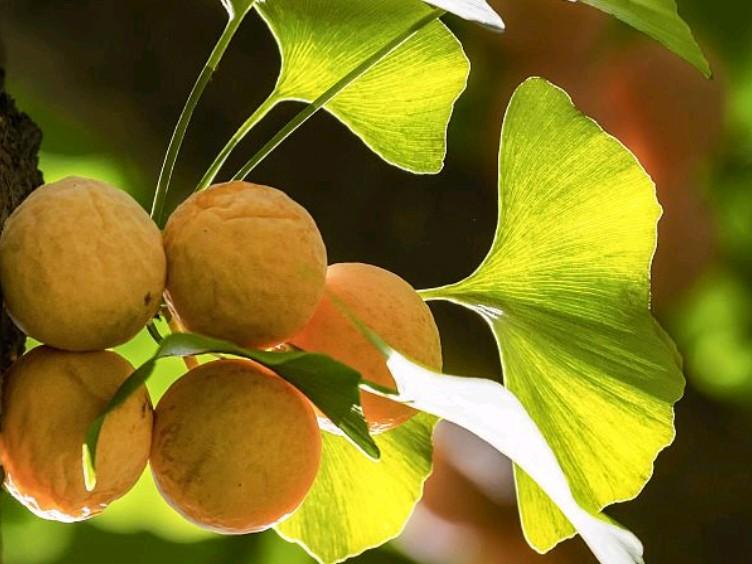What Is the Use of Ginkgo Flavone in Animal Feed?
Ginkgo biloba is the only precious tree species remaining in the Ginkgoaceae family from the Mesozoic era, and is often called the “pearl of the plant world” (Zhang Pengfei et al., 2017). Chinese medical classics record that ginkgo leaves can be used as a medicine to regulate blood and resolve blood stasis, with the effect of activating blood circulation, resolving blood stasis and unblocking collaterals. Ginkgo biloba leaves contain more than 160 compounds, including flavonoids and ginkgolides. Flavonoids have a wide range of medicinal properties, including improving blood circulation, antagonising platelet activating factors in the body, protecting the nervous system, and anti-tumour and anti-cancer effects (Wei and Zhang, 2018). Meanwhile, adding ginkgo biloba flavonoids to animal feed has many advantages, such as being naturally non-toxic, having diverse functions, and being economical and environmentally friendly. This article provides a brief review of the current research progress on the biological functions, extraction and purification processes, antioxidant properties and antibacterial properties of ginkgo biloba flavonoids, and looks at the prospects for the application of ginkgo biloba flavonoids in the feed sector.

1 Introduction to ginkgo Flavones
Flavones, as a natural plant component, are widely distributed in ginkgo leaves. Their structure contains phenolic hydroxyl groups, making the pH weakly acidic (Xiao Yongmei et al., 2019). According to molecular structure, 40 ginkgo flavonoids can be divided into three categories: (1) Flavonols and their glycosides, a total of 28 species, including 7 monoflavone glycosides. They can be used as standards to measure the total Flavone glycoside content. (2) The diflavonoids (dimeric flavonoids) are divided into 6 types. They are usually used as characteristic chemical components of gymnosperms. (3) The Flavones of the catechin type are divided into 6 types (Sun Xiaohuai, 2011).
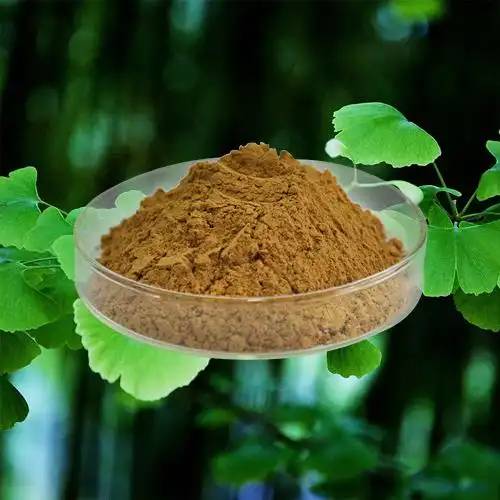
2 Biological functions of ginkgo biloba Flavones
2.1 Improving blood circulation
Quercetin, a flavonoid, can increase the Ca2+ concentration in vascular endothelial cells, thereby initiating the release of vasodilatory factors such as NO, which diffuse into the smooth muscle and cause vasodilation (Zhu Yi et al., 2004). Li Tianyi et al. (2009) found that the flavonoids in ginkgo biloba extract can significantly reduce the vasodilator factor and endothelin in the liver and lung tissue of rats with hepato-pulmonary syndrome, which has a therapeutic effect on the disease. Ginkgo biloba flavonoids can also reduce the content of angiotensin-converting enzyme factors, induce guanylate cyclase to activate cGMP in vascular smooth muscle, thereby inhibiting the myosin-actin complex signal pathway and causing vasodilation (Wang Xiu-jin and Li Zhi-jing, 2009). In addition, the Flavones in ginkgo biloba have an inhibitory effect on platelet aggregation and thrombosis, which is beneficial for the prevention and treatment of atherosclerosis (Chen Jiankang and Wang Lei, 2001).
2.2 Protecting the nervous system
The Flavones in ginkgo biloba have the effect of anti-thrombosis and enhancing metabolism. They can increase cerebral blood flow and prevent and treat various cerebral ischemic diseases (Sun Fang et al., 2014). At the same time, their antioxidant effect can improve the body's immunity and improve the blood vessels and brain stem cell function of patients with cardiovascular and cerebrovascular dementia, Alzheimer's disease and diabetes. Luo Xumin et al. (2005) found that the baicalin component of ginkgo biloba flavonoids can significantly inhibit the release of glutamate (Glu) caused by K+ in rat brain tissue sections, thereby effectively preventing a variety of neurological brain damage caused by excessive Glu release. In addition, the flavonoids in ginkgo biloba can also protect brain cells by inhibiting the opening of Ca2+ channels in cells caused by substances such as norepinephrine and KCl, thereby avoiding excitotoxic nerve damage caused by excessive Ca2+ release (Lv Yuewei and Guo Jianyou, 2016).
2.3 Anti-tumor and anti-cancer effects
Ginkgo biloba Flavones have the effect of preventing malignant tumors and cancers, especially estrogen-dependent tumors such as primary ovarian cancer, breast cancer and prostate cancer (Zhang Lihu et al., 2019). The molecular mechanisms of their antitumor effects include enhancing cellular antioxidant capacity, inhibiting tumor cell proliferation, activating pro-tumor necrosis factor, delaying the cell cycle, promoting differentiation and apoptosis, inhibiting signal transduction and cell-cell contact, etc. Du Hui et al. (2013) found that ginkgo biloba flavonoids can block human ovarian malignant teratoma PA1 in the G1 phase, but do not damage the functional cells of the ovary. The hypercoagulable state of the blood in elderly cancer patients can promote tumor proliferation and spread in the body. Su Lei et al. (2014) found that ginkgo biloba flavonoids can inhibit the hypercoagulable state of the blood by reducing the levels of plasma fibrinogen and D-dimer, and have a certain therapeutic effect on tumors in the elderly. Qian et al. (2015) found that ginkgo flavonoids can inhibit the expression of nuclear regulatory proteins and thereby block the signal pathway of gastric cancer factor growth.
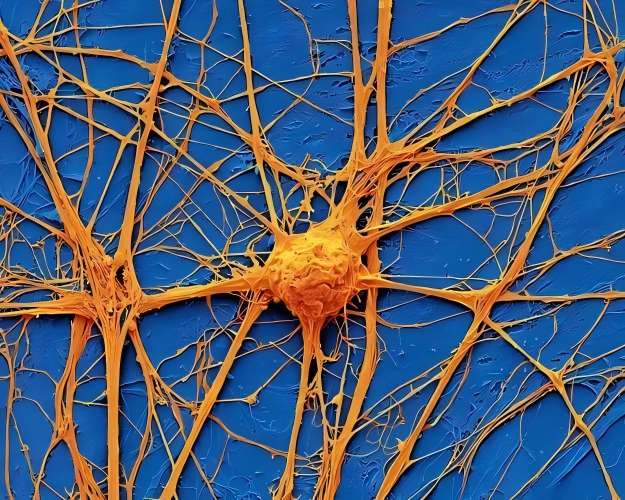
2.4 Anti-fibrosis effect
Ginkgo biloba Flavones have an inhibitory effect on the formation of fibrous tissue and can protect internal organs. Isorhamnetin is a flavonol contained in ginkgo leaves. Bai Tiao et al. (2018) found that isorhamnetin has a certain inhibitory effect on the fibrogenic process of diabetic rats with liver fibrosis, and can effectively treat fibrotic diseases such as myocardial fibrosis by inhibiting the TGF-β/Smad pathway in rat myocardium. He Ming et al. (2005) conducted clinical observations and experiments and concluded that the combined use of ginkgo flavonoids can treat pulmonary interstitial fibrosis, and that the mechanism of action may be related to the influence of immune cytokines in the body. Cao Wen et al. (2015) studied the clinical therapeutic effect and mechanism of action of a combination of three flavonoids in the treatment of rats with liver fibrosis. The conclusion of the analysis was that ginkgo flavonoid active substances can effectively combat CCl4-induced liver tissue fibrosis and play a certain protective role in rat liver function.
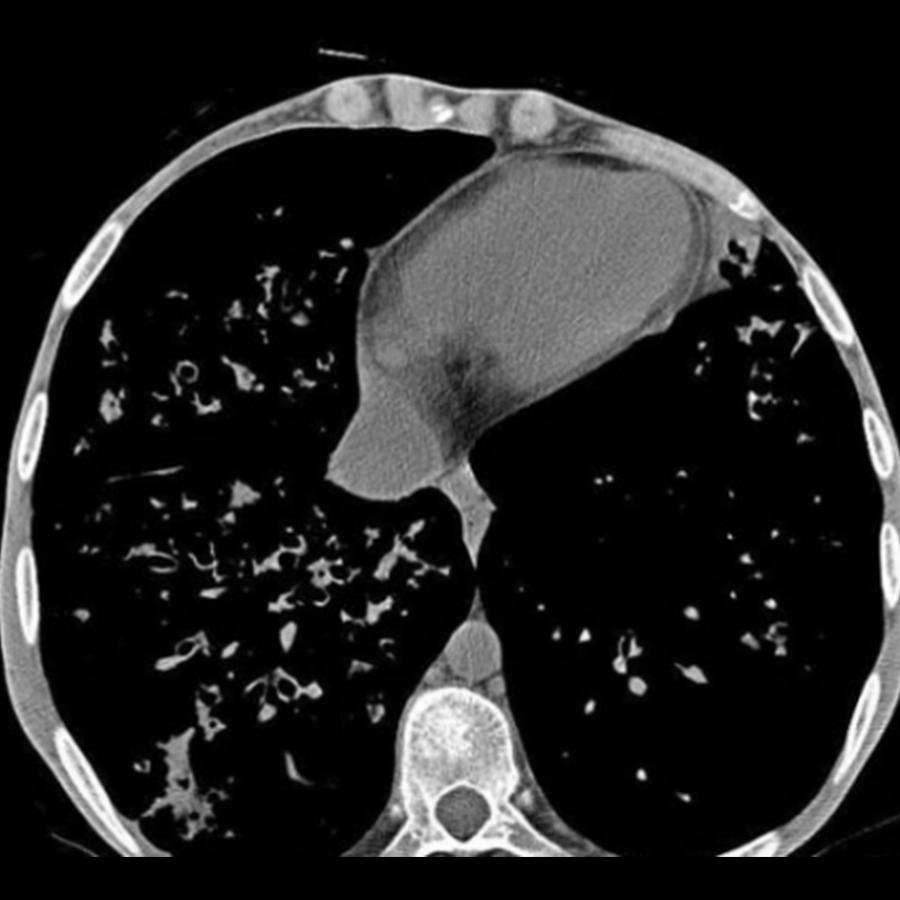
3 Extraction and purification process of ginkgo biloba flavonoids
3.1 Extraction process of ginkgo biloba flavonoids
3.1.1 Organic solvent extraction method
The organic solvent extraction method is the most traditional and currently the most widely used method. Organic solvents such as ethanol and methanol are generally used for extraction. Ethanol reflux extraction is mainly used in China. Song Jingjing et al. (2015) optimized the extraction process of ginkgo biloba flavonoids and concluded that the extraction yield of ginkgo biloba Flavones can be maximized under the extraction conditions of 50% ethanol concentration, a solid-liquid ratio of 1:45, an extraction time of 2 h, and a temperature of 70 °C. Shao Jing et al. (2013) determined the optimal process for extracting ginkgo biloba flavonoids using organic solvents through orthogonal experiments. When the liquid-to-material ratio is 1:20, the extraction temperature is 90 °C, the ethanol concentration is 50%, and the extraction time is 6 h, the flavonoid content is highest, accounting for about 35% of the extract.
3.1.2 Microwave-assisted extraction
In recent years, microwave-assisted extraction has gradually emerged as a method for extracting flavonoids. The main principle is to use the high temperature environment of microwaves to rupture cells, and then use the different dielectric constants of various substances to cause the different components to separate at different speeds after the effective ingredients in the cells flow out freely (Luo, 2018). Xu Chunming et al. (2014) concluded that the optimal conditions for microwave-assisted ethanol extraction of ginkgo flavonoids are as follows: a solid-liquid ratio of 1:25 (mL:g), a microwave power of 300 W, and microwave extraction with 70% ethanol by volume for 60 s. The yield of total flavonoids can reach 2.690%. Liang Xiaofeng (2012) showed that microwave-assisted extraction can increase the yield of ginkgo flavonoids by 1.64 times compared to ethanol solvent extraction.
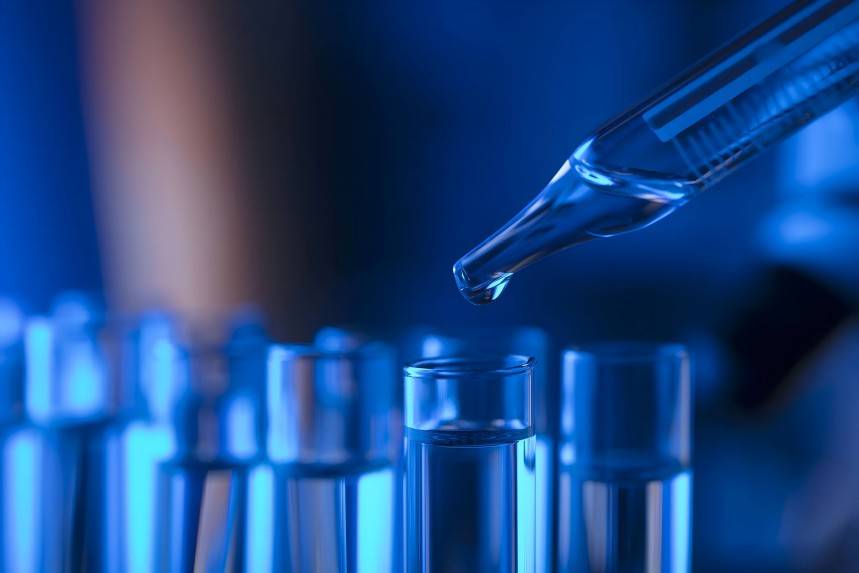
3.1.3 Ultrasonic extraction
Ultrasonic extraction is a new method for extracting Flavones that has been developed in recent years. The principle is to use the strong cavitation effect, the mechanical effect produced by strong stirring and vibration, to accelerate the lysis of the cell walls and cell membranes of flavonoid-containing plants, causing the flavonoids to leave the plants at high speed and dissolve efficiently in the solvent. The equipment used in this method is simple and highly automated, and can be used for large-scale production in factories. Yu Dehan et al. (2020) used the response surface method to optimize the extraction process of total flavonoids from ginkgo leaves by ultrasound, and concluded that at an extraction temperature of 50 °C, the extraction rate of flavonoids from ginkgo leaves can be as high as 5.328% after extraction with 63% ethanol for 32 minutes.
3.1.4 Enzyme-assisted extraction method
The cell walls of ginkgo leaves are mainly composed of polymeric compounds such as cellulose, and ginkgo flavonoids are not easily released. The principle of the enzyme-assisted extraction method is to use cellulase to degrade the skeletal structure of plant cell walls, so that after the cells are ruptured, the flavonoids are released into the solvent and then extracted. The enzyme-assisted method has the advantages of being highly targeted, safe, gentle extraction conditions, and a simple and feasible process. Shi Huijun et al. (2014) further optimized the process conditions for the extraction of total flavonoids from ginkgo leaves by cellulase, and concluded that the extraction solution had a pH of 5.2 and was enzymolyzed at a temperature of 80 °C for 60 min with 0.90% cellulase, the extraction rate was up to 3.452%. Zhang Wei et al. (2014) studied the effect of traditional extraction and cellulase-assisted extraction of ginkgo biloba Flavones and found that the yield of ginkgo biloba flavonoids was increased by 45.8% after the addition of cellulase.
3.1.5 Supercritical fluid extraction
This extraction method mainly utilizes the characteristics of supercritical fluids under specific conditions, such as low viscosity, high diffusivity, good solubility and mass transfer properties, to selectively extract a certain component from a solid or liquid by adjusting the fluid pressure and temperature. The supercritical fluid is then separated from the supercritical product by turning it into an inert gas (Yang Xiaoqing et al., 2014). Supercritical fluids can be recycled, with the advantages of low energy consumption, low damage to natural active ingredients, and high safety. However, the cost is relatively high, and currently supercritical carbon dioxide is the most widely used extraction fluid. Zhao Qijun et al. (2009) showed that when 90% ethanol is added as an entrainer, the total flavonoid extraction rate reaches a maximum after 1.5 h of supercritical extraction at a temperature of 50 °C and a pressure of 35 MPa.
3.2 Ginkgo biloba flavonoid purification methods
3.2.1 Membrane separation method
Membrane separation uses a semi-permeable membrane as a medium to selectively separate substances in a mixture at the molecular level by controlling the pore size on the semi-permeable membrane. Semi-permeable membranes can be divided into RO, NF, UF, MF, etc. according to pore size. Membrane separation has the advantages of being simple and convenient, energy-saving and environmentally friendly, and low cost. Xiang Wenyi et al. (2012) used a semi-permeable membrane with a molecular weight of 10,000 when studying the extraction of ginkgo biloba flavonoids using membrane separation. When purified under a pressure of 0.30 MPa and a temperature of 30 °C, the flavonoid transmittance was as high as 72%. Xu Qiuyan et al. (2015) used ultrafiltration to extract ginkgo biloba flavonoids and found that the flavonoid content in the extract could reach 4.83% when the ethanol concentration was 25%, the ultrafiltration temperature was 30 °C, and the ultrafiltration pressure was 0.9 MPa.
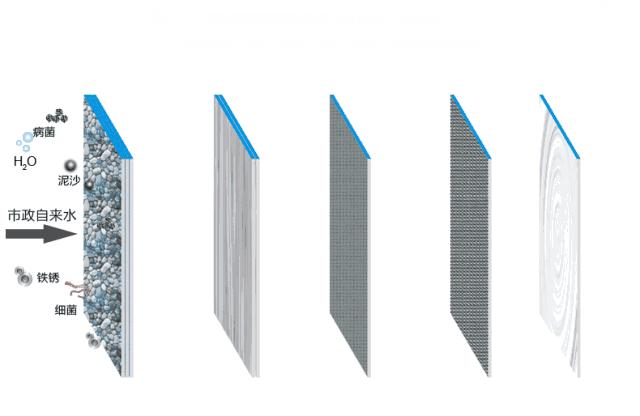
3.2.2 Macroporous adsorption resin method
The main principle of purification by macroporous adsorption resin is the physical adsorption of active ingredients by the adsorption capacity of the resin. Different types of adsorption resins, pore sizes and specific surface areas can be used to screen organic matter in solutions. The resin purification method has the characteristics of good stability, long service life, large adsorption capacity and recyclability. Wen-ting Yang et al. (2014) used D101 resin to purify the total flavonoids in ginkgo leaves. When the concentration of the sample solution was 2.0 mg/mL, the eluent was 80% ethanol, and the elution flow rate was 2 BV/h, the content of total flavonoids could reach up to 44.2%. Li Fengyan et al. (2018) studied the LX-68 resin purification process for ginkgo biloba flavonoids and concluded that when the pH of the extraction solvent was 4, the flow rate was 2 BV/h, and the final elution was carried out with 70% ethanol, the total flavonoid content in the extract reached 27.30%.
3.2.3 Polyamide column chromatography
The basic principle of polyamide column chromatography is to use the amide group of polyamide to form hydrogen bonds with the phenolic hydroxyl group of flavonoids to adsorb and separate the flavonoids. Yin Xiulian et al. (2007) used polyamide resin purification to study the effect of different concentrations of ethanol elution on purity, and concluded that the average adsorption capacity per gram of polyamide powder was 115 mg/g, and the purity of total flavonoids was 15.6% after elution with 70% ethanol.
4 Antioxidant and antibacterial properties of ginkgo biloba flavonoids
4.1 Antioxidant properties of ginkgo biloba flavonoids
Ginkgo biloba flavonoids are antioxidants found in natural plants. They can effectively scavenge various free radicals in the body, such as superoxide anion radicals, hydroxyl radicals, and DPPH radicals. They can also enhance the activity of superoxide dismutase in the body and effectively eliminate various unsaturated lipid free radicals and protein free radicals produced by oxidation in the human body, thereby preventing oxidative damage to human cells and tissues. The mechanism of action is as follows: (1) Flavonoids have a strong ability to supply hydrogen and can bind free radical ions, thereby cutting off the free radical chain reaction and directly removing them; (2) the chelation of flavonoids with metal ions prevents the generation of free radicals; (3) they protect and restore reducing agents such as vitamin C in the body, and also have a synergistic antioxidant effect (Lv Na, 2014). Zhang Guanghui et al. (2018) added 2 mL of DPPH radical solution to 1 mL of ginkgo flavonoids, and the anti-free radical activity was as high as 68.90%.
Li Min et al. (2013) found that the scavenging ability of ginkgo biloba flavonoids against three types of free radicals increased with the increase of the added amount of flavonoids, and the scavenging ability was higher than that of vitamin C solution of the same concentration.
4.2 Antibacterial properties of ginkgo biloba flavonoids
Flavonoids can coagulate or denature bacterial proteins. The main principle is that the structure of flavonoids contains phenolic hydroxyl groups, making the pH slightly acidic. As derivatives of phenolic substances, they can also destroy the bacterial cell wall and cell membrane skeleton, releasing the intracellular components and thus limiting the growth of microorganisms (Chen Congjin et al., 2011). With the widespread abuse of antibiotics in today's society, bacteria are becoming increasingly resistant. Ginkgo biloba flavonoids have the potential to be used as a purely natural food preservative, and when used in combination with other natural or artificial preservatives, they have an even better antibacterial preservative effect.
Hu Xiao et al. (2014) concluded from a study using the bacteriostatic circle test that ginkgo flavonoids have an inhibitory effect on most bacteria, but the inhibitory effect on bacteria in food is determined by the nature and state of the food. Huo Yinquan et al. (2012) used the filter paper disc method for a bacteriostatic test and concluded that the bacteriostatic effect of ginkgo biloba flavonoid solution on microorganisms was bacteria > moulds > yeasts. Huang Qichun et al. (2012) found that ginkgo biloba flavonoids showed a good inhibitory effect on harmful bacteria such as Staphylococcus aureus, Escherichia coli, Enterobacter aerogenes and Pseudomonas aeruginosa in the animal intestine.
5 Application of ginkgo biloba Flavones in feed
With the continuous development of the livestock farming industry, people have higher and higher expectations for livestock products. They want to ensure that the products not only meet nutritional needs, but are also safe and hygienic, with no side effects. Ginkgo trees are abundant in China, and ginkgo biloba flavonoids have no drug resistance or immunosuppressive effects. They have both nutritional and pharmacological effects, and can be added to animal feed as an additive.
The active ingredient in ginkgo biloba extract, flavonoids, can inhibit the growth of pathogenic microorganisms, maintain the homeostasis of the animal intestinal environment, improve reproductive capacity and disease resistance, and prevent the occurrence of diseases such as tumors, which promotes the health of livestock and poultry.
Chen Qiang et al. (2013) found that adding ginkgo biloba extract to chicken feed significantly increased the average daily weight gain compared to other broilers, and significantly improved the antioxidant properties of the broilers. The content of malondialdehyde in their serum was significantly reduced, while the content of serum globulin and the activity of superoxide dismutase were significantly increased.
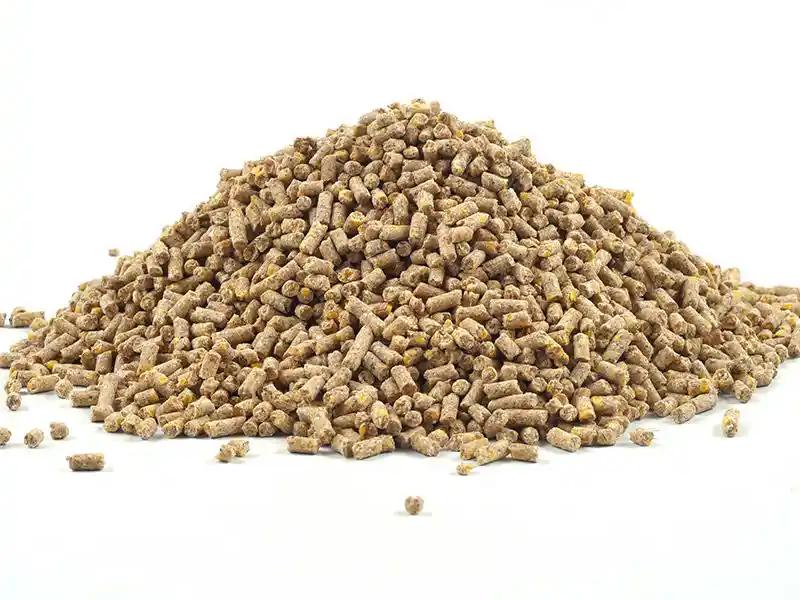
Ren Xiaojie et al. (2018) found that adding ginkgo biloba extract to the diet at different doses had an effect on the production performance and serum protein levels of broiler chickens. The content of high-density lipoprotein in the serum of broiler chickens increased significantly, while the content of low-density lipoprotein, triglycerides, cholesterol and other substances decreased, thereby improving the eating quality of the meat. In addition, flavonoids can act on related receptors on the animal growth axis to stimulate the secretion of endogenous growth hormone in the animal, promoting accelerated growth (Xu Xiaohuo and Qi Changle, 2012). Cao Fuliang et al. (2006) fed fermented ginkgo biloba leaves to yellow-breasted broiler chickens as a feed additive. After a period of time, the growth of the broiler chickens was monitored and it was found that the fermented ginkgo biloba leaves had a significant growth-promoting effect on yellow-breasted broiler chickens, with an average daily weight gain 5.74% higher than the control group.
In recent years, the focus of research in the feed industry has gradually shifted to the preparation of fermented feed by mixing microorganisms with ginkgo biloba leaves. On the one hand, the active substances in ginkgo biloba are utilized by the growth and metabolism of microorganisms, which can promote the synthesis of more active substances such as vitamins, amino acids, proteases, etc. On the other hand, ginkgo biloba is deeply processed under the catalysis of enzymes in microorganisms, which can decompose and transform toxic substances such as ginkgolic acid.

Therefore, the preparation of ginkgo biloba fermented feed has theoretical and practical significance. Ginkgo biloba flavonoids have multiple functions as feed additives. They are economical and environmentally friendly, non-toxic and have no side effects, and are naturally sourced. They can enhance the immune system, inhibit bacteria and viruses, accelerate animal growth, improve meat quality, etc. They are in line with the general trend of environmental protection and are highly marketable. They can be used as a safe and environmentally friendly multifunctional additive in a wide range of feed industries and animal production, and have broad development prospects.
References
[1] Bai, T., Chi, L., Gao, Y., et al. Intervention effect of isorhamnetin on myocardial fibrosis in diabetic rats [J]. Journal of Xinjiang Medical University, 2018, 41(7): 865-869.
[2] Cao Fuliang, Chen Guiying, Wang Guibin, et al. Effect of Ginkgo biloba leaf biofeed additive on growth and immunity of yellow feather broiler chicks [J]. Jiangsu Forestry Science and Technology, 2006, 2: 20-21.
[3] Cao Wen, Liao Ming, Zhou Yan, et al. Therapeutic effect and mechanism of taurine, epigallocatechin gallate and genistein in combination on liver fibrosis in rats [J]. Chinese Journal of Experimental Pharmacology, 2015, 21 (4): 107-111.
[4] Chen Congjin, Wang Qi, Li Xin. Research progress on the antioxidant and antibacterial biological activities of flavonoids [J]. Chinese Pharmacy, 2011, 22 (35): 3346 ~ 3348.
[5] Chen Jiankang, Wang Lei. Anticoagulant and thrombolytic effects of ginkgo flavonoids and eosinophil kinase [J]. Journal of Cardiology, 2001, 4: 308 ~ 309.
[6] Chen Qiang, Liang Junsheng. Effects of Ginkgo biloba extract on the performance and serum biochemical indicators of broilers [J]. Feed Research, 2013, 1: 47 ~ 49.
[7] Du Hui, Zhang Yan, Wang Huilan, et al. Effects of ginkgo flavonoids on human ovarian malignant teratoma cell line PA-1 and human ovarian granulosa cells [J]. Chinese Journal of Practical Gynecology and Obstetrics, 2013, 29(8): 633-637.
[8] He Ming, Zhang Xiaomei. Research on the correlation between the therapeutic effect of ginkgo flavonoids on pulmonary interstitial fibrosis and immune cytokines [J]. Journal of Beijing University of Chinese Medicine (Clinical Edition of Traditional Chinese Medicine), 2005, 5: 6-9.
[9] Hu Xiao, Bai Guang. Study on the antibacterial effect of ginkgo flavonoids [J]. Grain and Oil Processing (Electronic Edition), 2014, 11: 61-63.
[10] Huang Qichun, Zhang Guizhao. In vitro antibacterial effect of ginkgo biloba extract and its drug-containing serum on intestinal bacteria of piglets [J]. Jiangsu Agricultural Science, 2012, 40(10): 185-187.
[11] Huo Yinquan, Yin Jie. Ultrasonic extraction of ginkgo biloba flavonoids and its antibacterial research [J]. Food Industry, 2012, 33(5): 47-49.
[12] Li Fengyan, Wang Kai. Study on the purification of ginkgo biloba flavonoids and their α-glucosidase inhibitory activity using LX-68 macroporous resin [J]. Chemical and Biological Engineering, 2018, 35(7): 34-37+64.
[13] Li Min. Study on the extraction and antioxidant properties of ginkgo biloba total flavonoids [J]. Applied Chemistry, 2013, 42(6): 1023 ~ 1025+1032.
[14] Li Tianyi, He Guiqin, Guo Ying. The effect of ginkgo biloba extract on vasodilator factors in rats with hepato-pulmonary syndrome [J]. Chinese Journal of Traditional Chinese Medicine, 2009, 27(6): 1305 ~ 1307.
[15] Lv N. The relationship between the antioxidant properties of flavonoids and their chemical structures [J]. Modern Health Preservation, 2014, 22: 31.
[16] Lv YW, Guo JY. Research progress on the anxiolytic effects of natural flavonoid monomers [J]. Chinese Journal of Traditional Chinese Medicine, 2016, 41(1): 38 ~ 44.
[17] Luo Tairan. Research progress on the extraction process of total flavonoids from ginkgo biloba leaves [J]. Seed Science and Technology, 2018, 36(12): 104 ~ 105.
[18] Luo Xumin, Han Yumei, Tang Zhenghua, et al. Experimental study on the protective effect of baicalin on mouse brain tissue [J]. Chinese Medicine Science and Technology, 2005, 1: 5.
[19] Ren Xiaojie, Li Xiangming. Effects of ginkgo biloba and its extracts on growth performance, antioxidant and serum biochemical indicators of broilers [J]. Chinese Journal of Cereals, Oils and Foodstuffs, 2018, 33(4): 73 ~ 79.
[20] Shao Jing, Li Baijian. Research on the extraction and separation process of ginkgo biloba total flavonoids [J]. Chemical World, 2013, 54(8): 460 ~ 463+466.
[21] Shi Huijun, Wang Wenfeng, Dai Yujun. Optimization of the enzymatic extraction process of ginkgo biloba flavonoids [J]. Food Science and Technology, 2014, 39(10): 208-211.
[22] Song Jingjing. Study on the extraction process and antioxidant properties of ginkgo biloba flavonoids [J]. Fujian Agriculture, 2015, 8: 190.
[23] Su Lei, Hu Ling. Effects of Ginkgo biloba treatment on hypercoagulable state, plasma fibrinogen and D-dimer levels, and platelet count in elderly tumor patients [J]. Chinese Journal of Gerontology, 2014, 34(19): 5392-5394.
[24] Sun Fang, Wang Lu, Yan Bin, et al. Active ingredients and pharmacological effects of Ginkgo biloba extract [J]. Shandong Journal of Traditional Chinese Medicine, 2014, 33(3): 221-223.
[25] Sun Xiaohuai. Research progress on the active ingredients in Ginkgo biloba [J]. China Science and Technology Information, 2011, 4: 111 ~ 116.
[26] Wang Xiu-jin, Li Zhi-jing. Research progress of Ginkgo biloba preparations in the treatment of ischemic cerebrovascular disease [J]. Hebei Medicine, 2009, 31 (22): 3132 ~ 3134.
[27] Wei Y, Zhang JX. Research on the extraction and purification of ginkgo flavones [J]. Chemical World, 2018, 59(12): 795-800.
[28] Xiang Wenyi, Zhu Mingxing, Yun Yanbin. Coupling membrane separation technology with molecular imprinting technology to purify ginkgo flavonoids [J]. Jiangsu Agricultural Sciences, 2012, 40(10): 235-237.
[29] Xiao Yongmei, Li Ming, Mao Pu, et al. Research progress on the biological modification and activity of flavonoids [J]. Journal of Henan Polytechnic University (Natural Science Edition), 2019, 40(2): 123-131+139.
[30] Xu C M, Wang Y Y, Li T, et al. Microwave extraction and bioavailability of total flavonoids from Ginkgo biloba leaves [J]. Forest Product Chemistry and Industry, 2014, 34 (4): 131 ~ 136.
[31] Xu Qiuyan, Xiao Xinrong. Study on the extraction of flavonoids from Ginkgo biloba and Gynostemma pentaphyllum by ultrafiltration [J]. Journal of University of South China (Natural Science Edition), 2015, 29(4): 87-91.
[32] Xu Xiao, Qi Chile. Regulation of soybean isoflavones on physiological functions of livestock and poultry [J]. Journal of Animal Nutrition, 2012, 24(3): 436-438.
[33] Yang Wenting, Wu Shijun. Research on microwave extraction and purification process of ginkgo biloba total flavonoids [J]. Science and Technology Innovation Herald, 2014, 11(11): 2-4.
[34] Yang Xiaoqing, Wang Xin, Li Ruirui, et al. Extraction and characterization of active ingredients in ginkgo biloba leaves [J]. Guangzhou Chemical Industry, 2014, 42 (14): 60.
[35] Yin Xiulian, You Qinghong, Wei Xiaochun. Study on the separation and purification of ginkgo biloba total flavonoids by polyamide chromatography [J]. Pharmaceutical World, 2007, S1: 43 ~ 44.
[36] Yu Dehan, Li Li, Su Shi, et al. Research on the ultrasonic extraction process of total flavonoids in ginkgo leaves using response surface optimization [J]. Guangzhou Chemical Industry, 2020, 48 (8): 64 ~ 67.
[37] Zhang Guanghui, Meng Qinghua. Optimization of ultrasonic-assisted extraction of flavonoids from Ginkgo biloba leaves and study of their anti-free radical activity using response surface methodology [J]. Contemporary Chemical Industry, 2018, 47(1): 17-19+25.
[38] Zhang Lihu, Wu Tingting. Research progress on the anti-tumor activity of flavonoids in Ginkgo biloba extract [J]. Chinese Journal of Pharmacy, 2019, 54(6): 444 ~ 449.
[39] Zhang Pengfei, Liao Lijun, Deng Zhen, et al. Research progress on the pharmacological effects and clinical applications of Ginkgo biloba extract [J]. Liaoning Journal of Traditional Chinese Medicine, 2017, 44(2): 426 ~ 429.
[40] Zhang Wei, Zhang Huanxin, Shi Shuai. Study on the enzymatic extraction of flavonoids from Ginkgo biloba leaves [J]. Food Research and Development, 2014, 35 (7): 48.
[41] Zhao Qijun, Mo Runhong, Chen Ruxiang, et al. Study on the extraction of ginkgo biloba flavonoids by CO2 supercritical fluid method [J]. Jiangxi Forestry Science and Technology, 2009, 3: 27 ~ 28+40.
[42] Zhu Y, Liang Z Q, Gu Z L. Effects of quercetin on the levels of ET-1 and NO in cultured umbilical vein endothelial cells under hypoxic conditions [J]. Journal of Soochow University: Medical Sciences Edition, 2004, 3: 280–282.
[43] Liang X F. Extraction Technology of Flavonoids from Ginkgo biloba L. Shells [J]. Medicinal Plant, 2012, 3(10): 6469.
[44] Qian Y, Xia L, Shi W. The effect of EGB on proliferation of gastric carcinoma SGC7901 cells [J]. Clin Transl Oncol, 2015, 18(5): 521-526.


 English
English French
French Spanish
Spanish Russian
Russian Korean
Korean Japanese
Japanese